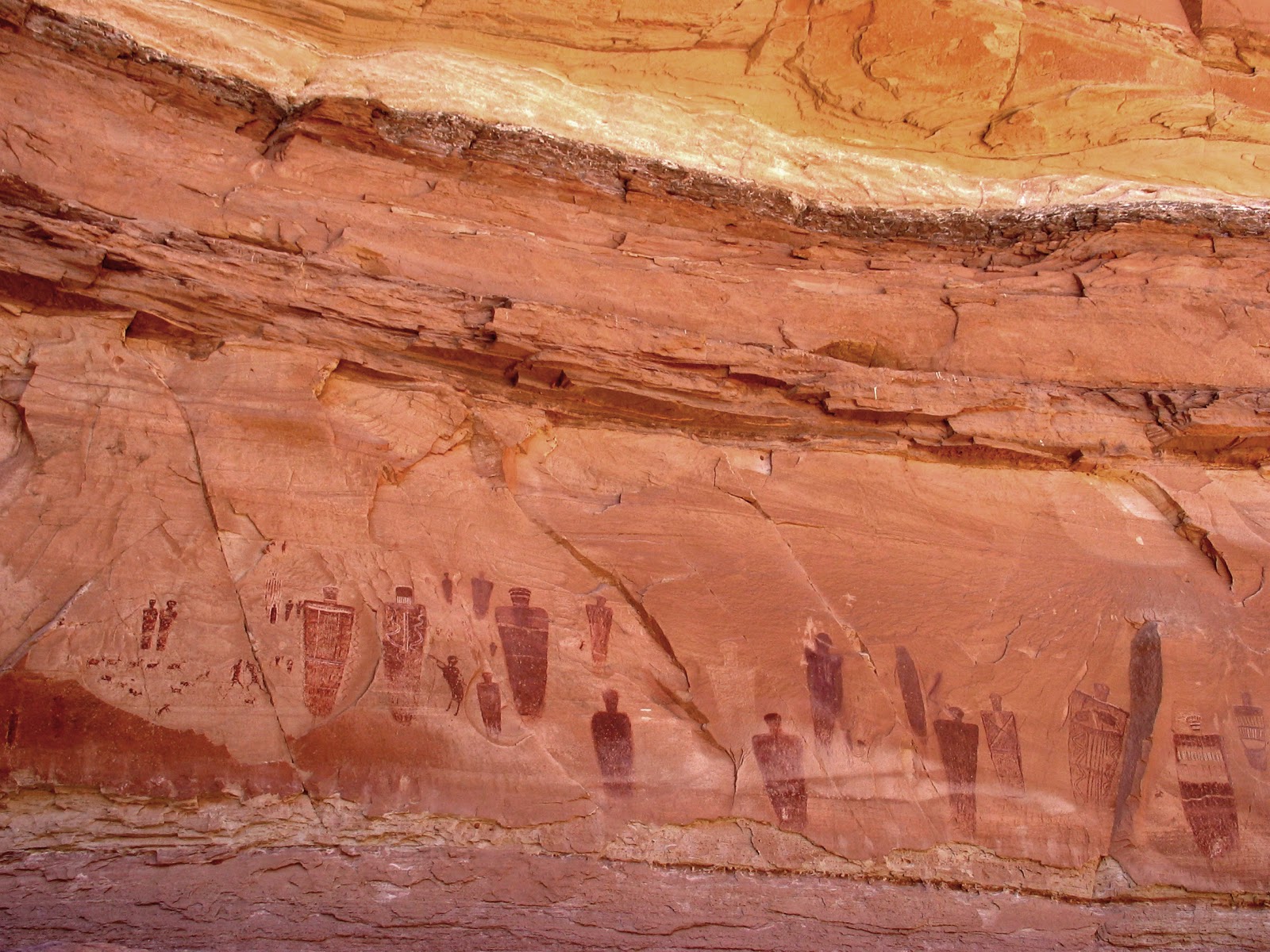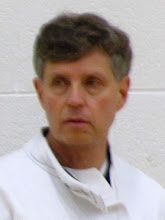We left the inn in Castle Valley in the dark, just before dawn with a sheet of vague directions. Only the military had GPS then and nothing visual was yet shared on the embryonic Internet. We were casually on our own in the Southwest in a way few are any more. I drove the rented, blue Ford Explorer and Lynn navigated: first south along the Colorado River, cold and black in the early spring, crossed the river near Moab, north again to I-70, west, then south on U-24. The weather was changeable. In the first light there were black clouds over the tortured up-thrust of the San Rafael Swell and the mountains were snow-dusted. Any weather was possible.
There were two or three forks, some noted in our directions, some not. Sage scratched the side of the car and the road wound for no reason. It seemed we had found our way to nowhere. I remembered the scene in the movie “The Passenger” in which David Locke gets his Land Rover stuck in a sand dune in the middle of the sub-Saharan desert and there’s no one else around and nothing he can do about it. But we kept on. The road straightened and we surmounted a low rise which revealed a great deep and winding rift in the sage brush plain.
That was it: there was another barely legible sign. We took our packs, locked the SUV and began the steep hike down into Horseshoe Canyon.
At the bottom it was breezy which seemed odd since the canyon wasn’t wide. I remember wondering where the wind was coming from and where it was going. We hiked slowly: we’d hunted pictographs and petroglyphs before and knew how easy it was to miss them.
The remnants of the river that had cut the rift still trickled in the valley floor and occasional Cottonwood trees grew at the edge. They creaked and moaned with the wind and made me think about haunted places. At that time it was thought the rock art we were looking for was 3,000 years old. They’d be old ghosts indeed. Small side canyons appeared, beckoning.
We kept on. The first pictographs weren’t large but there were a lot: a long, diverse party of figures at different scales. One particular dark trapezoidal figure stood next to an animal with a long, curling tale. I decided it could be me and our black cat Charlie, although I’m certain the artist wasn’t drawing a domestic feline.
Up close, the 8 foot tall ancient painted figures, some of the largest in the American Southwest, were most remarkable for the detail on their bodies: vertical curves like snakes, fighting animals, intricate pecked arrays of small lines and dots. There were almost no arms or legs, most faces were ominously empty except for eyes yet there was one with a wide grinning straight mouth. In a couple of places smaller, human figures were around them in very natural human poses: a pair fighting, a man playing a flute perhaps.
As we walked out in the late afternoon we encountered another pair of hikers, the only others we saw that day.
Recent work suggests that the Barrier art in the canyon may be much more recent, around a thousand years old, which would place it at the time of great flowering of ancient Puebloan culture on the Colorado Plateau. The site is deservedly more popular now and commonly visited. A ranger is in residence most days and I’d expect you’d have to hike it in mid-winter to have something like the experience we had then.
As we drove back we discovered that it had rained while we’d been hiking but the road was passable. It was dark when we returned to the inn and we were late for dinner.
Post script: my Malory study continues. I’ve just acquired Armstrong and Hodges 2014 text Mapping Malory: Regional Identities and National Geographies in Le Morte Darthur and I’m far from finished with Hardyment and Field.








No comments:
Post a Comment